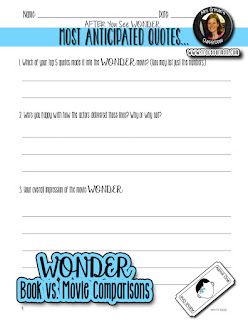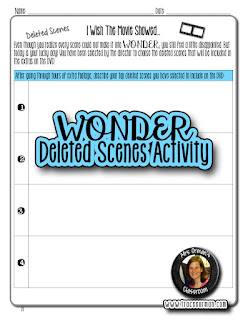During the holidays, advertisers ramp up their advertising, luring buyers to their stores. They'll use colorful, vivid words to snag new customers, which actually works in YOUR favor, English teachers! You can use their ads to teach a number of lessons.
1. CHANCE (or DADA) POEMS: Cut up the words and use them for an impromptu poetry writing session. I like to store the words in little plastic baggies and use them when we have time left at the end of the period. I'll have students work in groups and prompt them to create a poem based on the lesson we just practiced (or the book/story/character we are reading). Or if there is a fun event coming up (a holiday, a dance, etc.), have them create a poem related to the event. Give them a limited time to create a poem, then have each group share with the class.
3. REVIEW IDIOMS AND CLICHÉS: Ads are perfect for containing overused idioms and clichés. Introduce and/or review the figurative phrases with your students. Have them find their own in the ads, old magazines, or in newspaper headlines.
4. ANALYZE THE MERIT OF MARKETING: Have students look over the ads, analyzing the marketing techniques used, including the word choices and design/aesthetics (colors, font, and placement of words and products on the page). Which phrases stood out to them? Which did they pay little attention to? Were others more effective? Why?
5. ANALYZE TARGET AUDIENCES: As students look over the ads, ask them to evaluate who might the target audience be for the ad. How did they come to that conclusion? Which words and/or phrases did they use as clues? Do the ads stereotype?
I've been using ads and newspapers in my classroom for years. If you do not have access to a newspaper or magazines, check with your media specialist to see if she/he has older copies that can be saved for you. Also, your school may be eligible for Newspapers in Education. It's a wonderful program that supplies classrooms with copies of newspapers, which are paid for by donations from local businesses.
My Magnetic Poetry Kit is also an option for activities #1 and #2 if you don't have access to newspapers or magazines.
You can keep collecting the ads through the spring: Valentine's Day ads are perfect for love-inspired poems; there's also President's Day, St. Patrick's Day, Easter, and so on... Each holiday will offer different flavors of language to suit the occasion.
COMING SOON: Handouts for each of these activities, which will be included in my POETRY BUNDLE (a bundle of ALL of my poetry-related resources...past, present, and future!)

















